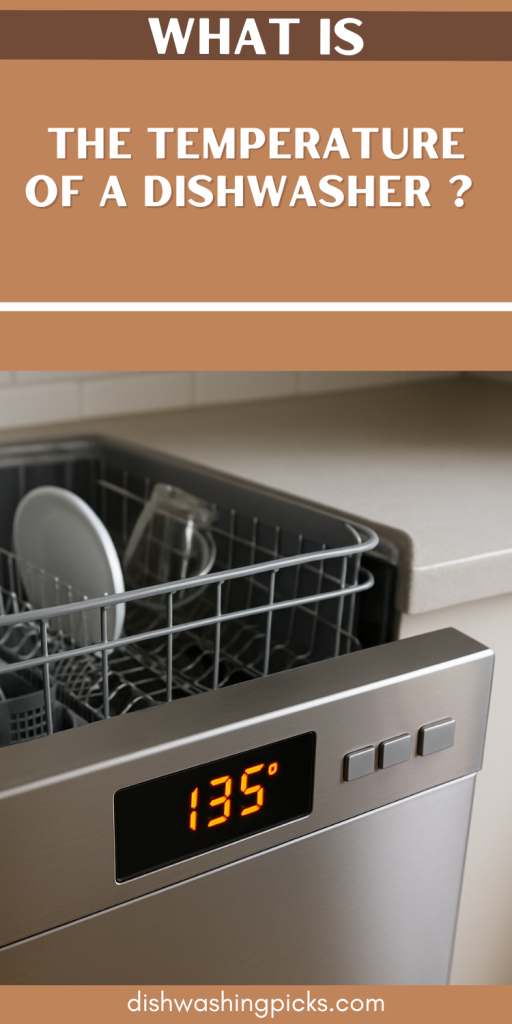
Alright, let’s settle something that’s been low-key bothering everyone who’s ever opened a steamy dishwasher: how hot is this thing actually getting? Because wow—sometimes it feels like you’re reaching into the sun just to grab a coffee mug. So… what’s the deal with dishwasher temperatures?
Let’s talk about it in a way that doesn’t sound like a science class.
So… How Hot Is It in There?
Okay, real talk—your dishwasher is basically having a spa day while you’re binge-watching shows on the couch. Most dishwashers heat water to anywhere between 120°F to 160°F (that’s about 49°C to 71°C for the Celsius folks). Pretty toasty, right?
Now, it depends a bit on the model. Some dishwashers keep it chill (well, not literally) at around 120-140°F, which is the sweet spot for getting gunk off your plates without turning them into lava rocks. But if you’ve got a high-temp wash or sanitize setting turned on? Buckle up. We’re talking up to 150-160°F.
Yep. Hot enough to kill bacteria, melt grease, and make your glasses foggy for the next decade.
Why So Hot Though?
Good question. Like, isn’t soap enough?
Well, kind of… but not really.
Dishwashers crank up the heat for a few solid reasons:
- Cleaning Power – Hot water breaks down food and grease way faster. Cold water might get the job done eventually, but it’s like washing a lasagna dish with tap water and hope. Not happening.
- Sanitization – You know those cycles labeled “sanitize” or “hygiene boost” or something equally extra? That’s where temps hit the higher end. The goal? Kill 99.999% of the stuff you don’t want near your mouth.
- Drying Help – Hotter water = hotter dishes = faster drying. Your dishwasher is kinda playing the long game here.
So yeah, that steamy burst you get when you open the door? Not just drama. It’s part of the plan.
Wait… Is That Even Safe?
Ah, the big question. Is it safe for your dishes? For your hands? For your sanity?
Let’s break it down:
- For dishes: Most things marked dishwasher safe can totally handle it. Plates, glasses, silverware—they’re built for the heat. But beware of plastics, especially cheap ones. Even if they survive the wash, they might come out looking a little… wobbly.
- For hands: Don’t go reaching in mid-cycle. That steam can hurt. Wait for the beep, crack the door, and give it a sec before diving in. Your fingers will thank you.
- For your machine: Dishwashers are literally designed to handle this. It’s not like it’s running a fever—it’s just doing its job.
What About Cold Water Washes?
Good try. But nope.
Dishwashers need hot water to work properly. If your home’s water heater is set super low (like below 120°F), your dishwasher might take longer or not clean as well. Some dishwashers have built-in heaters to fix this, but others rely on your water supply to come in already hot.
Imagine trying to clean a greasy pizza pan with cold water and a dream. Yeah. Doesn’t work.
So if you’ve noticed your dishwasher taking forever, it might be waiting for your water to heat up. Pro tip: run the hot water in your sink for a few seconds before starting the cycle. Gets the heat flowing faster.
Your dishwasher’s temp is hot enough to:
- Melt cheese off plates (miraculously).
- Kill bacteria like a germ-fighting superhero.
- Make opening the door feel like stepping into a steam room.
Typical range? Around 120°F to 160°F, depending on the cycle and model.
And no, you’re not imagining things—it really is that hot in there.
Before You Go… A Few Random (But Useful) Tips:
- Avoid putting cheap plastic in the bottom rack unless you enjoy reshaped bowls.
- If your dishes aren’t drying well, try the high-temp or sanitize cycle.
- If your dishwasher smells funky, run a cycle with just vinegar or one of those cleaner pods.
- Curious about the exact temp of your machine? Some manuals actually list it (yeah, that little booklet no one reads).
Alright, now you’re officially the person who knows way too much about dishwasher temps. Congrats! Go impress your friends. Or just, you know, not get burned the next time you go for a mug.
